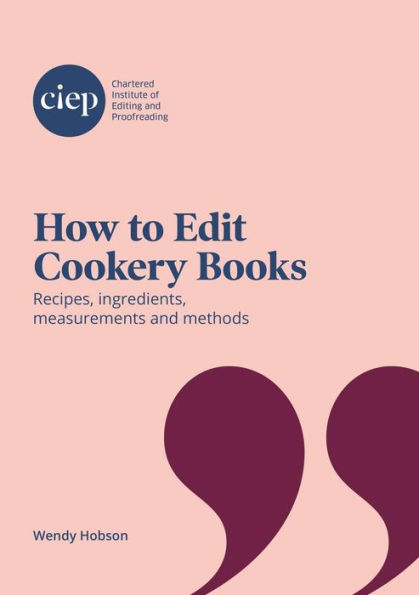CIEP guides provide a short, basic introduction to the various skills and knowledge needed to work as an editorial professional. They are intended for copyeditors and proofreaders, both practising and potential, and will also prove useful to others involved in publishing content, including businesses, organisations, agencies, students and authors.
Editing recipes demands all the usual skills of a copyeditor or proofreader. But there are also conventions in good cookery and recipe writing that can mean the difference between success and failure in the kitchen.
In this short guide, Wendy Hobson gathers her years of experience to explain the essentials of successful cookery editing, including:
- pitching it right - making sure the text is targeted to the skill level and knowledge of its intended readers
- dealing with ingredients - bringing clarity and consistent presentation
- making sense of the method - applying conventions to help the reader understand quickly what to do
- adapting for an international audience - so the recipes can be understood by cooks wherever they are in the world.
This guide is designed to help you edit cookery texts, giving you a sound foundation in the specific needs of this popular niche market. Benefit from the distillation of over 40 years of experience working on cookery books to help you learn to prepare text to the standards expected in cookery publishing.
CIEP guides provide a short, basic introduction to the various skills and knowledge needed to work as an editorial professional. They are intended for copyeditors and proofreaders, both practising and potential, and will also prove useful to others involved in publishing content, including businesses, organisations, agencies, students and authors.
Editing recipes demands all the usual skills of a copyeditor or proofreader. But there are also conventions in good cookery and recipe writing that can mean the difference between success and failure in the kitchen.
In this short guide, Wendy Hobson gathers her years of experience to explain the essentials of successful cookery editing, including:
- pitching it right - making sure the text is targeted to the skill level and knowledge of its intended readers
- dealing with ingredients - bringing clarity and consistent presentation
- making sense of the method - applying conventions to help the reader understand quickly what to do
- adapting for an international audience - so the recipes can be understood by cooks wherever they are in the world.
This guide is designed to help you edit cookery texts, giving you a sound foundation in the specific needs of this popular niche market. Benefit from the distillation of over 40 years of experience working on cookery books to help you learn to prepare text to the standards expected in cookery publishing.

How to Edit Cookery Books: Recipes, ingredients, measurements and methods
80
How to Edit Cookery Books: Recipes, ingredients, measurements and methods
80
Product Details
| ISBN-13: | 9781915141255 |
|---|---|
| Publisher: | Chartered Institute of Editing and Proofreading |
| Publication date: | 12/14/2023 |
| Sold by: | Barnes & Noble |
| Format: | eBook |
| Pages: | 80 |
| File size: | 1 MB |
